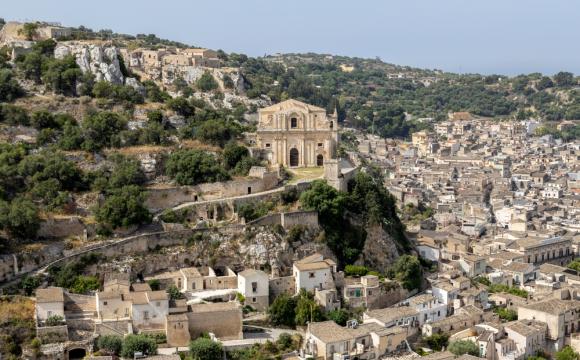 The legendary Italian motorscooter Vespa celebrated its 60th birthday on Thursday with a big party and unveiling of three new models. The event at Vespa's headquarters also saw the presentation of a project to build a new Vespa Museum, designed by famed architect Massimiliano Fuksas.
The legendary Italian motorscooter Vespa celebrated its 60th birthday on Thursday with a big party and unveiling of three new models. The event at Vespa's headquarters also saw the presentation of a project to build a new Vespa Museum, designed by famed architect Massimiliano Fuksas.
The Vespa's actual birthday was April 23, the day in 1946 when the patent for the innovative two-wheeler was registered in Florence by Piaggio & Co. The scooter was the first step in the reconversion of an airplane factory built here in 1917 and modeled on the one Rinaldo Piaggio originally set up in the northwest coastal region of Liguria in 1884.
This first plant produced naval furnishings and then branched out into the construction of carriages, railway cars, trolleys, motors and chassis, for the budding automobile industry.
Piaggio's shift to aircraft construction coincided with the outbreak of World War I and the building of new plants, including the one here between Pisa and Florence. The Pontedera factory specialised in the production of the four-engine P108 plane, both the passenger and bomber models.
During World War II Piaggio's factors in Genoa, Finale Ligure and Pontedera were all bombed. The idea of converting the airplane factory to civilian use was tthe brainchild of Enrico Piaggio, a direct descendant of the company's founder, while the innovative design was the work of Corradino D'Ascanio.
An aircraft designer by trade, D'Ascanio came up with the idea of producing a cheap, small-engine bike with its gear shift on the handlebar and the motor over the back wheel. This was then covered in a steel cowling which gave the scooter its distinctive shape that made it look like a wasp, which in Italian is vespa.
Thanks to its protective front shield and mud guard on the floor, the Vespa kept the rider cleaner and drier than on a traditional motorbike. The scooter was an immediate success, acting as the prototype for all scooters to follow. By 1949, over 35,000 scooters were produced and by the mid-1950s Piaggio was producing the Vespa in Britain, Germany, France, Belgium, Spain, Indonesia and India.
In Britain the Vespa became a cultural icon and in the early 1960s it was the preferred transportation for the young people who defined themselves as 'Mods', compared to the 'Rockers' who rode motorcycles.
This period was captured in the 1979 British cult film Quadrophenia.
The Vespa's most famous movie cameo was in the 1953 film Roman Holiday, in which journalist Gregory Peck gives princess-in-disguise Audrey Hepburn a tour of the Italian capital on the back of his Vespa.
After losing ground to Japanese competitors, rhe Vespa has made a major comeback over the past five years or more thanks to the introduction of new models which are easier to drive and are more environmentally friendly. This reopened the door to the lucrative United States market, where they had been banned since the 1980s because of their poor emissions ratings.
Over 120 different Vespa models have been produced since 1946 and more than 16 million scooters have been sold.












